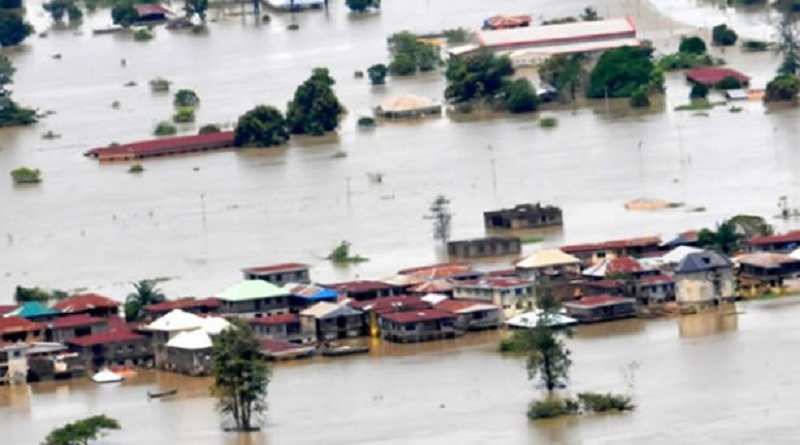Agency confirms closure of Lagdo Dam, says excessive rains may cause floods
The Nigeria Hydrological Services Agency (NIHSA), has confirmed Cameroonian Authorities’ decision to shut down the spilling of excess water from the Lagdo Dam.
NIHSA Director General, Mr Clement Nze in a news conference on Tuesday in Abuja said there was no cause for alarm or apprehension of possible flooding in the country.
He noted that flood occurrences in major parts of the city and coastal areas were largely due to excessive rainfall and flash flooding, as a result of climate change.
Nze said severe flooding with attendant damage and deaths could be minimised when relevant authorities took responsibility for preparedness, and ensure that people don’t build on flood plains.
The News Agency of Nigeria (NAN) reports that every year, neighbouring Cameroon, which runs along the length of Nigeria’s eastern border, releases water from Lagdo dam in northern Cameroon, causing flooding downstream in Nigeria.
It may be recalled that at the time of the dam’s construction, in the 1980s, the two countries agreed that a twin dam would be built on the Nigerian side to contain the overflow, but the second one was never realised.
According to him, the release of excess water from Lagdo dam was a normal reservoir operations to forestall possible collapse of the dam.
He said water releases are integral to safeguarding dam integrity and mitigating flooding in adjacent communities.
“The Lagdo dam is located on the Benue River in the Niger Basin. The Cameroonian authorities commenced release of excess water from Lagdo Dam by 10.10am on August 14, 2023.
“The release of water from the Dam commenced at the rate of 200 cubic metres per second, which is about 18 million cubic metres of water per day.
“By 25th August 2023, the water releases from the reservoir has reduced to 50 cubic metres per second, which is a normal reservoir operations and far negligible to cause any flooding downstream.
“However, by 5.16pm yesterday, 28th Aug., 2023, the Hydrologist in-charge of the Dam notified the Director General of NIHSA that they stopped spilling water by 11.00am that same yesterday”.
The director general said the agency would continue to monitor water flows in rivers Niger and Benue, saying readings by the agency showed no threat of floods.
He said NIHSA was saddled with the responsibility to provide data for sustainable management of the nation’s vast surface and underground water resources, in partnership with key stakeholders.
He urged states to complement Federal Government’s efforts by sensitising their populace on flood disaster prevention, saying FG cannot do it alone.
He also called on states to clean up their drainage systems, construct more, and sanction those flouting the building codes, saying this was necessary to prevent disasters.
Speaking on the Dasin Hausa dam in Adamawa state, which was meant to be a buffer dam to prevent floods whenever Lagdo dam releases excess water, Nze said its study and design had been completed.
He said the Federal Ministry of Water Resources and Sanitation had contacted the consultants, adding that procurement would commence in no distant time.
On dredging of rivers Niger and Benue to curtail excessive flooding, the director general said it was an expensive venture and would require desilting, saying if done properly, it would recharge groundwater in many locations.
NAN reports that 32 states and the FCT, which are within the Highly Probable Flood Risks Areas include; Adamawa, Abia, Akwa- Ibom, Anambra, Bauchi, Bayelsa, Benue, Cross- River, Delta, Ebonyi, Ekiti, Edo.
Others are; Gombe, Imo, Jigawa, Kaduna, Kano, Kebbi, Kogi, Kwara, Lagos, Nasarawa, Niger, Ogun, Ondo, Osun, Oyo, Rivers, Sokoto, Taraba, Yobe, as well as Zamfara and the FCT.
By Tosin Kolade




